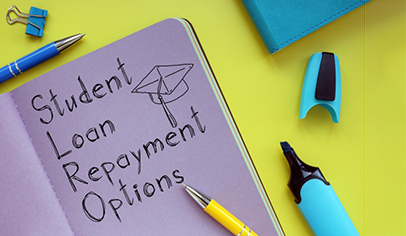jack_the_sparrow/123RF
If Sally graduated college in 2012 and has been paying her student loans on time for over 10 years—since the day she graduated—does she owe more or less than what she did 10 years ago?
The answer: it depends. Is Sally on a repayment plan to help her afford the payments with her teaching salary and the cost-of-living? Is her interest adding up as she only pays the minimum she can afford? Is she able to make a payment that has gradually decreased her repayment amount over the last 10 years?
There are a lot of factors that weigh into student loan debt and repayment. One solid fact that does not vary: educators are drowning in debt. As costs continue to rise, so does college debt, and the pervasiveness of this problem is showing among educators.
The reality of student debt
According to a National Education Association’s (NEA) report, one in seven educators owe more than $105,000 in student loans after paying on their debt for almost ten years. This debt is impacting how educators live, as many struggle to pay basic bills such as rent and food because of their debt payment, interest rates and salary—let’s face it, teachers do not go into education for the money. They do it for the children.
Younger educators are in debt because of rising tuition costs and increased interest rates. However, older educators are not off the hook as many retired educators—more than a quarter according to the NEA report—are still paying off their college debt.
The lost hope of Public Service Loan Forgiveness
With this debt glooming above educators’ heads, many of them turned toward Public Service Loan Forgiveness (PSLF). In 2017, the first eligible borrowers were able to apply for forgiveness, but 98 percent were denied because of tight rules and regulations.
PSLF is a government program that offers debt relief to qualified borrowers in public service jobs. Borrowers need to make 120 qualifying, on-time monthly payments toward their qualifying federal direct loans under a qualifying repayment plan while working full-time for a qualifying employer—that’s a lot of “qualifications” and missing one of these qualifications makes a borrower ineligible for forgiveness, hence the 98 percent of borrowers denied.
Another chance
Seeing the problem of student loan debt in a post-pandemic world with a rising cost-of-living, the government has begun to step in more than ever.
The Department of Education announced a limited waiver opportunity, with the deadline quickly approaching on October 31, 2022. During this limited-time opportunity, borrowers can receive credit for past periods of repayment on loans that otherwise would not qualify for PSLF. Periods of repayment on loans before consolidation, repayment under any plan, repayments that were late or for less than the amount due, cumulative instead of consecutive payments, and credit during FMLA all count—and are only a few of the temporary changes—under this waiver.
President Biden also announced a three-part plan to aid in student loan relief. First, debt cancellation—$20,000 to Pell Grant recipients and $10,000 to non-Pell Grant recipients making less than $125,000 annually. Second, a more manageable student loan system for current and future borrowers—extending the pause on federal student loan repayment, cutting monthly payments in half for undergraduate loans, and making some of the temporary waiver changes permanent. Third, protecting future students and taxpayers by reducing the cost of college.
While these changes are already happening, the government is still working toward providing even more aid and relief. Enrolling in PSLF helps ensure you are eligible for some of these reliefs now and moving forward as these are government initiated and only available for federal student loans (consolidation is a part of PSLF). You can learn more about the program, get answers to frequently asked questions, and learn how to enroll at federalstudentaid.gov.
Other options for forgiveness
In addition to PSLF, teachers have additional options for forgiveness.
- Teacher Loan Forgiveness
This program, started before PSLF, allows teachers at qualifying schools to have up to $17,500 of Direct or FFEL loans forgiven after five years. Under the temporary waiver, TLF does not affect PSLF eligibility.
- Perkins Loan Cancellation for Teachers
Teachers with Perkins Loans can get 100% of these loans forgiven for teaching full time at a low-income school or teaching certain subjects such as math, science, foreign language, and others determined to be in a shortage in the state the teacher is based. The forgiveness is granted in increments and includes interest accrued during the year—year 1 is 15%; year 2 is 15%; year 3 is 20%; year 4 is 20% and year 5 is 30%.
- State-Sponsored Student Loan Forgiveness Programs
Out of the 50 states, 47 and the District of Columbia offer state-based loan repayment assistance programs. These programs were designed to help states staff teachers in areas or programs where there are shortages.
- Loan Forgiveness after Repayment Period
All income-based repayment programs through PSLF include student loan forgiveness on any remaining balance after the repayment period—typically 20 or 25 years. This inclusion is automatically a part of the repayment plans and does not require anything additional be done to sign up, qualify, or maintain eligibility.




